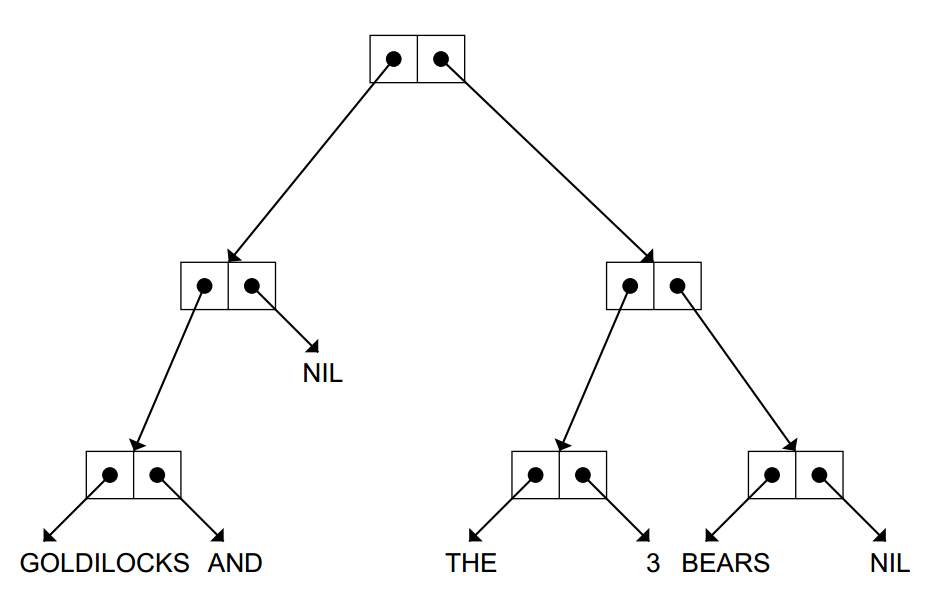Recursion
search ood number in list
recurion construction
- end condition
- logic code and recursive call
e.g.
(defun anyoddp (x)
(cond ((null x) nil)
((oddp (first x)) t)
(t (anyoddp (rest x)))))
THE THREE RULES OF RECURSION
- Know when to stop.
- Decide how to take one step.
- Break the journey down into that step plus a smaller journey.
templates
Double-Test Tail Recursion
(DEFUN func (X)
(COND (end-test-1 end-value-1)
(end-test-2 end-value-2)
(T (func reduced-x))))
Single-Test Tail Recursion
(DEFUN func (X)
(COND (end-test end-value)
(T (func reduced-x))))
Augmenting Recursion
Instead of dividing the problem into an initial step plus asmaller journey, they divide it into a smaller journey plus a final step
(DEFUN func (X)
(COND (end-test end-value)
(T (aug-fun aug-val
(func reduced-x)))))
e.g.
(defun count-slices (x)
(cond ((null x) 0)
(t (+ 1 (count-slices (rest x))))))
List-Consing Recursion
As each recursive call returns, we createone new cons cell.
(DEFUN func (N)
(COND (end-test NIL)
(T (CONS new-element
(func reduced-n)))))
Multiple Recursion
(DEFUN func (N)
(COND (end-test-1 end-value-1)
(end-test-2 end-value-2)
(T (combiner (func first-reduced-n)
(func second-reduced-n)))))
TREES AND CAR/CDR RECURSION
(DEFUN func (X)
(COND (end-test-1 end-value-1)
(end-test-2 end-value-2)
(T (combiner (func (CAR X))
(func (CDR X))))))

THE LABELS SPECIAL FUNCTION
(LABELS ((fn-1 args-1 body-1)
...
(fn-n args-2 body-2))
body)
RECURSIVE DATA STRUCTURES
S-expression (‘‘symbolic expression’’)
defined recursivly
An S-expression is either an atom, ora cons cell whose CAR and CDR parts are S-expressions.
e.g.
tree